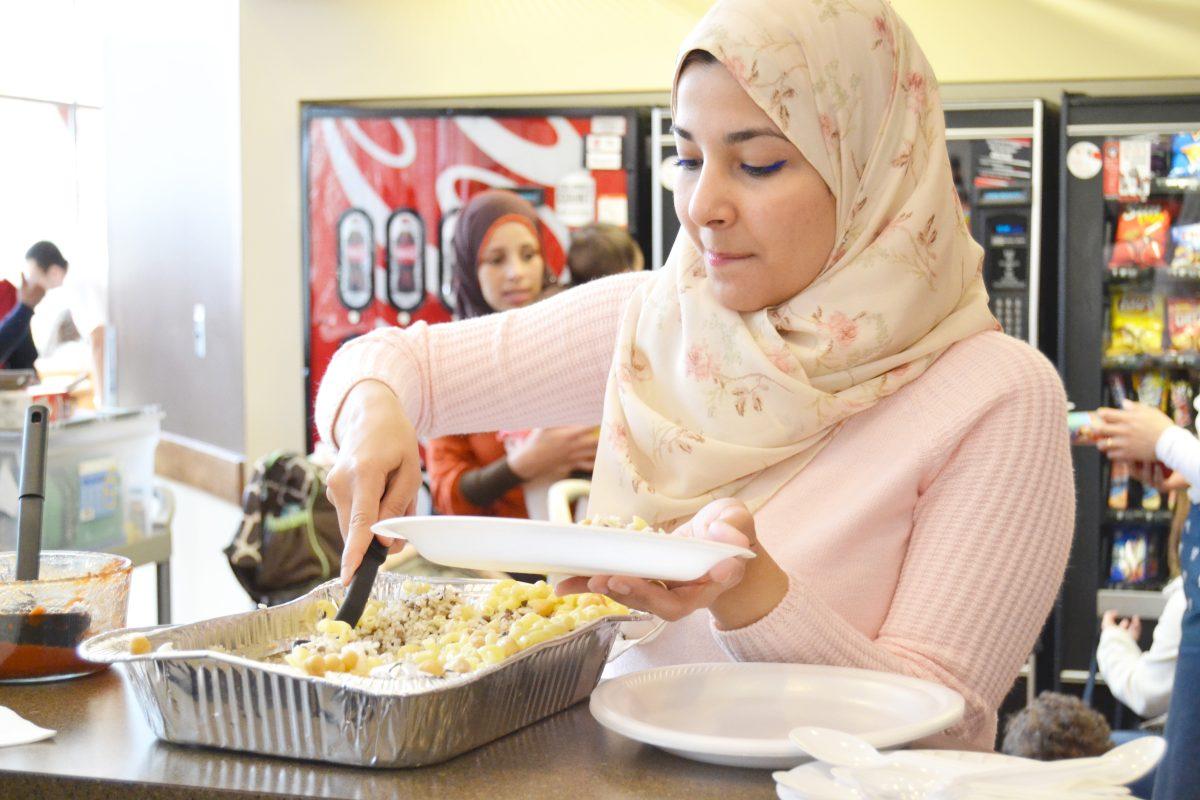Attendee’s dressed in traditional Egyptian clothing, wrote their names in Arabic and sampled ethnic delicacies at the Egyptian Showcase sponsored by the Office of International Services Thursday from noon to 2 p.m. in Caldwell Lounge.
The Egyptian Student Association organized the event to share Egyptian culture with students.
Ahmed Gomaa, president of the Egyptian Student Association at N.C. State, said he hoped the event would help students learn more about Egyptian culture.
“People tend to hear things about Egypt but not from Egyptians, and most of these things tend to be false,” Gomaa said. “We are trying to show people what actual Egyptian culture is and what actual Egyptian people believe in.”
Gomaa also discussed the importance of being culturally diverse.
“I would personally be interested in learning about other cultures,” Gomaa said.
The event began with a short presentation about Egypt, after which students sang the Egyptian national anthem.
Tables displaying different aspects of Egyptian culture were featured throughout the lounge. The first table showcased main tourism spots in Egypt, such as the pyramids, the White Desert safari tour and Hurghada diving.
Hurghada is the third largest city in Egypt and a major tourist destination due to its location on the Red Sea.
The second table, titled “The Faces of Egypt,” was operated by Mohamad Midani, a fiber and polymer science graduate. This table displayed different Egyptian communities, such as Bedouins and Nubians, as well as the main occupations Egyptian people partake in, such as farming and fishing.
“There are very common stereotypes about Egypt, like Egyptian communities are still living in the desert and riding camels,” Midani said. “It’s actually very different, so what I am showing here are the local communities living in Egypt and the diversity of the communities based on the geographic regions. What I am trying to do is show the faces of Egypt, like what the people really look like and their daily lives.”
The third table offered information about the Egyptian language. Attendees were able to have their names written in Arabic, the country’s official language.
The fourth table displayed facts about the religion. In Egypt, 90 percent of the people are Muslim, 9 percent are Orthodox Christian and the remaining 1 percent of the people are other types of Christian, according to the display.
The table also displayed facts about ancient Egypt’s religious practices, such as the various gods the people worshipped. Each Egyptian city had its own god. The main gods were Osiris, the king of afterlife; Isis, the god of motherhood, magic and fertility; Anubis, the protector of the dead; and Horus, the god of vengeance, sky and war.
There were several tables set up that exhibited traditional Egyptian clothing and instruments. Attendees of the event were allowed to play the instruments and take pictures with the clothing.
Homemade food was provided. The event featured signature cultural dishes, such as Egyptian desserts and chickpeas boiled in water with added flavors.
Miranda Tjelta, a freshman in middle grades language arts and social studies, said it is important to learn about various cultures other than one’s own.
“I think it’s really important to learn about different cultures, because it can help you understand your own culture better by seeing how other people view your culture,” Tjelta said.








